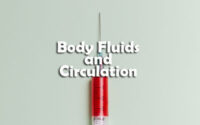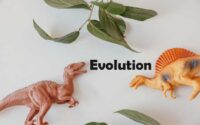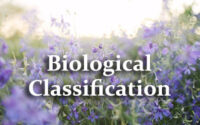Strategies for Enhancement in Food Production
1. Artificial selection to obtain cows yielding higher milk output represents—
A. stabilizing selection as it stabilizes this
B. character in the population.
C. directional as it pushes the mean of the character in one direction
D. disruptive as it splits the population into two, one yielding higher output and the other lower output.
E. stabilizing followed by disruptive as it stabilizes the population to produce higher yielding cows.
2. A true breeding plant is-
A. always homozygous recessive in its genetic constitution.
B. one that is able to breed on its own
C. produced due to cross-pollination among unrelated plants.
D. near homozygous and produces offspring of its own kind.
3. Among the following edible fishes, which one is a marine fish having rich source of omega-3 fatty acids?
A. Mackerel
B. Mystus
C. Mangur
D. Mrigala
4. Interspecific hybridisation is the mating of
A. animals within same breed without having common ancestors
B. two different related species
C. superior males and females of different breeds
D. more closely related individuals within same breed for 4-6 generations.
5. A cell at telophase stage is observed by a student in a plant brought from the field. He tells his teacher that this cell is not like other cells at telophase state. There is no formation of cell plate and thus the cell is containing more number of chromosomes as compared to other dividing cells. This would result in—
A. somaclonal variation
B. polyteny
C. aneuploidy
D. polyploidy
6. The number of chromosomes present in the cells of the bread wheat, Triticum aestivum suggests that it is—
A. Hexaploidy
B. Diploid
C. Tetraploid
D. pentaploid
7. One of the breeding techniques useful to eliminate harmful recessive genes by selection is-
A. Inbreeding
B. artificial insemination
C. MOET
D. out-breeding
8. Plants obtained through tissue culture are genetically identical and they are obtained by somatic cells. What do you call them?
A. somatic hybrids
B. somaclones
C. cross hybrids
D. monoclones
9. A protoplast is a cell—
A. without cell wall
B. without plasma membrane
C. without nucleus
D. undergoing division
10. Outbreeding is an important strategy of animal husbandry because it—
A. exposes harmful recesisve genes that are eliminated by selection.
B. helps in accumulation of superior genes.
C. is useful in producing purelines of animals.
D. is useful in overcoming inbreeding depression.
11. Hisardale is obtained by crossing-
A. horse with donkey
B. merino ewes with Bikaneri rams
C. superior bull with superior cow
D. Bikaneri ewes with Merino rams.
12. Continued self pollination results in—
A. formation of unisexual flowers
B. inbreeding depression
C. gametes loose vigour
D. self incompatibility
13. Triticale is an example of —
A. Autopoiyploidy
B. Allopolyploidy
C. Aneuploidy
D. none of these
14. Haploid plant can be obtained from—
A. bud culture
B. anther culture
C. root culture
D. leaf culture
15. The Noble prize for study of communication methods of honey bees was given to—
A. Karl Korrens
B. Karl Von Frisch
C. Hugo de Vries
D. Parkinson
16. Protein present in silk fibre is—
A. Collagen
B. Fibroin
C. Elastin
D. casein
17. The silkworm which is reared on castor plants is—
A. eri silkworm
B. muga silkworm
C. oak silkworm
D. tassar silkworm
18. Tikka disease of groundnut is caused by-
A. Phytophthor
B. Cercospora
C. Albugo
D. Colletotrich
19. Resistance to yellow mosaic virus in Abelmoschus esculentus was transferred from a wild species and resulted in a, new variety called—
A. Sehore
B. Raphanus sativus
C. Parbhani Kranti
D. Musa pudica
20. The breeding of the unrelated animals which may be between individuals of the same breed, (but having no common ancetors), or between different breeds or different species is known as—
A. interspecific hybridisation
B. out-breeding
C. out-crossing
D. cross-breeding
21. MOET is a programme that is used to increase—
A. herd size
B. disease resistance
C. biomass
D. yield
22. In poultry anibiotics are used to treat—
A. infectious coryza
B. gumboro disease
C. Brooder’s pneumonia
D. Afflatoxicosis
23. The marine fish among the following varieties is—
A. Stromateus
B. Labeo
C. Cirrhinus
D. Catala
24. Following are all breeds of cows except-
A. Jersey
B. Nagpuri
C. Sahiwal
D. Sindhi
25. Somaclones are prepared by—
A. callus culture
B. sexual reproduction
C. micropropagation
D. somatic hybridisations
26. The phenomenon that operates in the formation of root or shoot in a callus culture is-
A. differentiafion
B. re-differentiation
C. de-differentiation
D. re-juvenation
27. To obtain virus-free healthy plants from a diseased one by tissue culture technique, which part/ parts of the diseased plant will be taken?
A. Apical meristem only
B. Palisade parenchyma
C. Both apical and axillary meristems
D. Epidermis only
28. Genetically improved crop varieties can be developed in laboratory by—
A. somatic hybridisation
B. transgenic technology
C. cell suspension culture
D. all of these
29. The semi dwarf wheat which was instrumental in increasing wheat production was developed by—
A. Alexander Von Humboldt
B. Dr. Kurien
C. Edward Jenner
D. Norman E. Borlaug.
30. Mating of two varieties of a cattle breed like Red Dane which have no common ancestors on either side of their pedigree up to 4-6 generation is an example for—
A. Inbreeding
B. inter-specific hybridisation
C. cross breeding
D. out crossing
31. During somatic hybridisation in plants
A. the cell walls and the middle lamella are digested before fusing the cells.
B. somaclones are produced in large mumbers.
C. crop plants with higher levels of vitamins, proteins and minerals are hybridised.
D. the apical meristems are cultured to get virus-free plants.
32. Parbhani kranti, a variety of bhindi (lady finger), is resistant to-
A. black rot
B. bacterial blight
C. leaf curl
D. yellow mosaic virus
33. The ‘hissardale’ is a breed of sheep developed by crossing between—
A. bikaneri ewes and merino rams
B. merino ewes and bikaneri rams
C. deccani ewes and bikaneri rams
D. merino ewes and apenine rams
34. Plants can be made disease resistant through —
A. colchicine treatement
B. X-ray treatment
C. breeding with wild relatives
D. hormone treatment
35. In which method of animal breeding two different species of male and female animals are mated?
A. Interspecific hybridisation
B. out breeding
C. out crossing
D. cross breeding
36. During the process of artificial hybridisation if the female plant bears bisexual flowers, then emasculation is done with the help of forceps, which is—
A. removal of style from the flower bud before the anther dehiscence
B. removal of style from the flower bud after the anther dehiscence
C. removal of anthers from the flower bud before anther dehiscence
D. removal of anthers from the flower bud after the anther dehiscence.
37. Somatic hybridisation can be done by-
A. protoplast fusion
B. cell culture
C. haploid anther
D. pollen culture
38. In plant breeding programmes, the entire collection (of plants/seeds) having all the diverse alleles for all genes in a given crop is called-
A. germplasm collection
B. selection of superior recombinants
C. cross-hybridisation among the selected parents
D. evaluation and selection of parents
39. Which of the following is not true for inbreeding?
A. It causes inbreeding depression after a few generations.
B. It always increases the productivity
C. It is used to produce a pure line
D. It leads to homozygousity
40. Which is not a milch breed-
A. Gir
B. Sahiwal
C. Deoni
D. Siri
41. The most popular fine wool breed of sheep is—
A. Suffolk
B. Ramboullet
C. Merino
D. Lincoln
42. Halliker, a draught breed of cattle is found in—
A. Karnataka
B. Gujarat
C. Andhara Pradesh
D. Madhya Pradesh
43. Amrithmahal is a/an—
A. Dual purpose breed
B. Exotic breed
C. cross breed
D. draught breed
44. Tissue culture technique can produce infinite number of new plants from a small parental tissue. The economic importance of the technique is in raising.
A. genetically uniform population identical to the original parent
B. homozygous diploid plants
C. new species
D. variants through picking up somaclonal variations.
45. Which of the following statements is not true aboutsomatic embryogenesis?
A. The pattern of development of a somatic embryo is comparable to that of a zygotic embryo.
B. Somatic embryos can develop from microspores.
C. Somatic embryo is induced usually by an auxin such as 2, 4-D.
D. A somatic embryo develops from a somatic cells.
46. Wax glands in honey bee are present on—
A. 1—4 abdominal segments of queen
B. 2-4 abdominal segments of queen
C. 2-5 abdominal segments of workers
D. 1-3 abdominal segments of workers
47. Which is most recent domestication-
A. Buffalo
B. Sheep
C. Turkey
D. Silkworm
48. Tasar silkworm feeds on leaves of—
A. Mulberry
B. Castor
C. Ber
D. Rubber
49. Given below are assertion and reason.
Assertion : inbreeding increases homozygosity exposing harmful recessive genes, some of which are eliminated by selection.
Reason : Continued inbreeding reduces fertility and productivity.
A. both are true with reason being correct explanation.
B. both are true but reason is not correct explanation.
C. assertion is true but reason is wrong.
D. both are wrong.
50. Pebrine in silkworms is caused by-—
A. Dugesia
B. Monocystis
C. Nosema
D. Plasmodium
51. Apiculture is associated with which of the following groups of plants?
A. grapes, maize, potato
B. sugarcane, paddy, banana
C. guava, sunflower, strawberry
D. pineapple, sugarcane, strawberry



